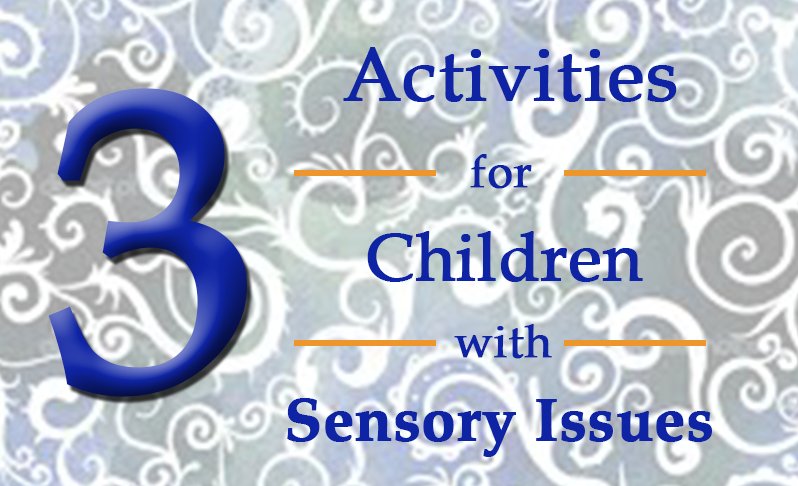In my last post, I shared a story about a child who offers a model of what is possible even when sensory struggles are extreme. I discuss my experiences with Sophie and Rett Syndrome because Rett’s is one of the most intractable of sensory and neurodevelopmental conundrums. Any success in Sophie’s case represents promise for other sensory conditions.
After years of treating Sophie, I realize that by falling into compassion and attunement with her I likely provide the most advanced and meaningful service possible. (Tweet this quote.) My work, combined with her mother’s advocacy and follow-through, has allowed Sophie to be able to
- enter adolescence without a wheelchair,
- create art,
- communicate with others, and
- be dynamically interactive and expressive.
This far exceeds the standard prognosis for this condition. Today, Sophie is flourishing as a teenager in high school by participating in activities and making friends.
The fourteen indicators of growth and improvement Sophie experienced (see the previous post) are a direct response to interventions I introduced into Sophie’s life. These interventions are 1) applied touch, 2) cranial therapy, and 3) engaged dialogue.
Applied Touch
I used an ancient Japanese meridian or acu-touch system that I have studied for over thirty years called Jin Shin. It employs touch on specific areas that stimulate what is known in Oriental medicine as the extraordinary meridians or eight reservoirs of energy.
Like the ordinary meridians, the extraordinary meridians (also called the Rivers of Splendor) respond by awakening an innate healing response. They do this best with repeated contact. Pressure is not necessary but can be used if the child prefers it as some children with sensory needs do. Two areas on connective tissue are always held in concert. This system can be learned by parents and repeated at home. This is one of its stellar attractions.
Cranial Therapy
I employ a number of basic and simple cranial treatment methodologies to soften connective tissue in the neck and sub-occipital area, at the occiput or base of the skull and on the entire cranium including, whenever possible, the face. I also use cranial-sacral therapies. I aim for cranial decompression, spaciousness and the overall removal of restrictions.
Engaged Dialogue
I mirror back to Sophie what I perceive her to be communicating and wait for verification from her. I also invite her into conversations and share my treatment choices and observations with her. I enunciate slowly and clearly and make sure she can see my lips moving as I make the segments of the words. I do my utmost to be fully present for her.
Engaged dialogue is arguably my most important contribution, alongside the use of applied touch. I talk with Sophie intelligently and participate with her in true conversation. (Tweet this quote.)
The authenticity of my relationship with Sophie elicits her progressive and increasing capacity for vital and appropriate social engagement. My attunement to her is a learnable skill. Sophie’s mother says her intimacy with her daughter has deepened because of what she has observed and learned from my interactions with Sophie.
Creating an Environment for Sensory Integration Success
What I want to underscore is that it is the nature of the practitioner-recipient relationship that creates success. A key factor to compound effectiveness is recruiting active and consistent parent involvement whenever possible. Sophie’s mother shines as an example of this by treating Sophie at home regularly. This is one of the main reasons why I selected this case study to share with you.
I believe that if care providers follow such a path of limbic stimulation that all their other therapies will increase in potency. The general theme of limbic stimulation revolves around
- faith in human potential,
- value of attuned communication, and
- consistency in applied interventions by caregivers.
Limbic stimulation is a treatment for Sophie’s sensory dysfunction. The foundation of her treatment is as follows:
- Responsive interaction (i.e. present, relational, deeply curious)
- Applied touch
- Active parental participation
- Follow-through treatment at home
Neurological resilience is driven by the power of love that is directly and consistently manifested through attention and skill. Just the intention to inquire into the truth of someone else’s authentic experience and bypass your own projections will initiate the neurochemistry of love. This fine tuning that requires so much patience pays off and ripens into real, observable change.
Providing this relational field for a child with sensory challenges is like providing miracle doses of a hormonal solution. It’s a completely natural and free elixir that lubricates resiliency.
Author
 Dr. Stephanie Mines is a psychologist whose unique understanding comes from her academic research as well as her extensive work in the field. Her stories of personal transformation have led many listeners to become deeply committed to the healing journey. Dr. Mines understands shock from every conceivable perspective. She has investigated it as a survivor, a professional, a healthcare provider, and as a trainer of staffs of institutions and agencies. Meet Stephanie.
Dr. Stephanie Mines is a psychologist whose unique understanding comes from her academic research as well as her extensive work in the field. Her stories of personal transformation have led many listeners to become deeply committed to the healing journey. Dr. Mines understands shock from every conceivable perspective. She has investigated it as a survivor, a professional, a healthcare provider, and as a trainer of staffs of institutions and agencies. Meet Stephanie.



